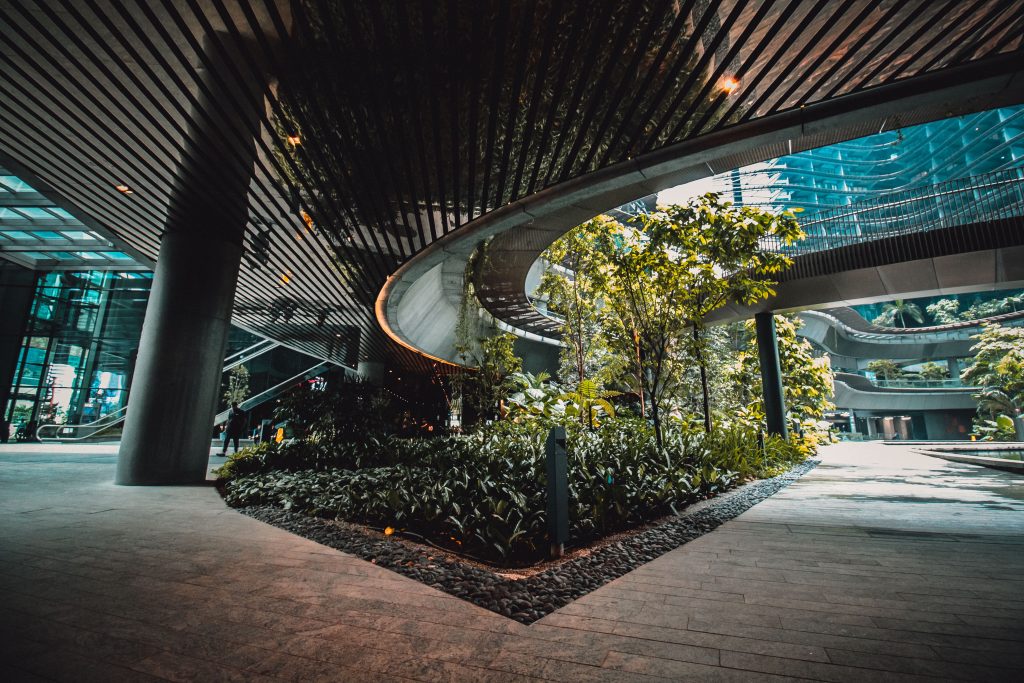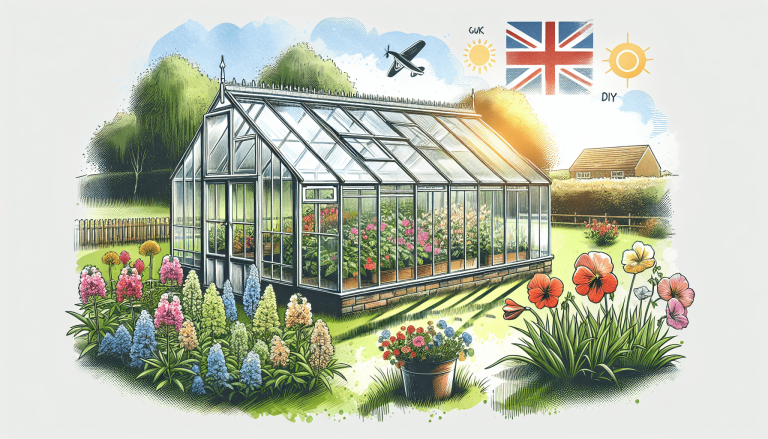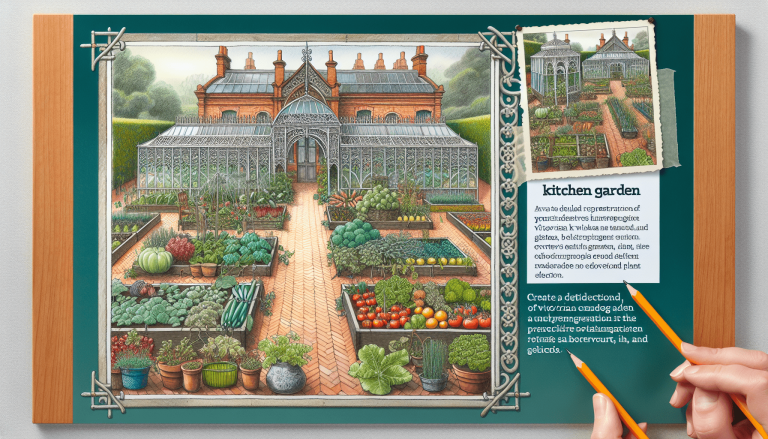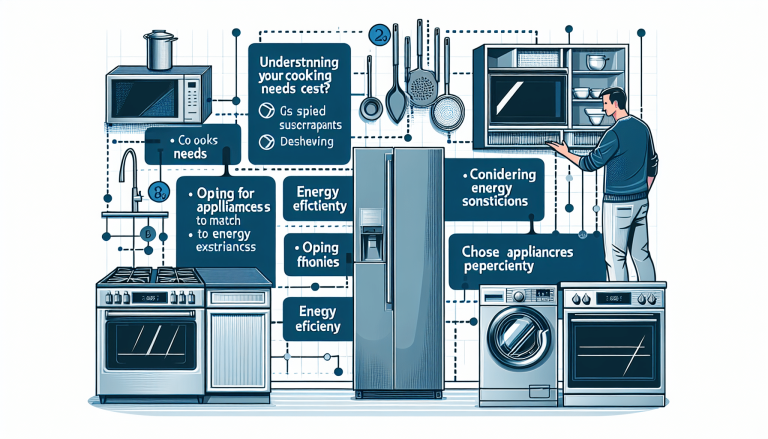If you’re looking to make the most of your garden and maximize your productivity, then we have just the information you need! Planning a garden layout that optimizes space and ensures an abundant harvest can seem daunting, but fear not! In this article, you will discover practical tips and strategies to help you design a garden layout that not only looks stunning but also works efficiently to provide you with an abundance of fresh produce. So, grab your gardening tools and let’s get started on creating the garden of your dreams!
Table of Contents
ToggleChoosing the Right Location for Your Garden
Consider sunlight exposure
When choosing a location for your garden, one of the most important factors to consider is sunlight exposure. Most vegetables and flowers require at least six hours of direct sunlight per day to thrive. Take note of the areas in your yard that receive the most sun throughout the day and choose a location that will provide ample sunlight to your plants.
Evaluate soil quality
The quality of your soil can greatly impact the success of your garden. Take some time to evaluate the soil in your chosen location. Is it sandy, clay-like, or loamy? Sandy soil drains quickly but may not retain enough moisture. Clay soil, on the other hand, tends to hold too much water and can become compacted. Ideally, loamy soil, which is a mixture of sand, silt, and clay, is the best option for most plants as it retains moisture while allowing for proper drainage.
Assess drainage and water availability
Proper drainage is crucial for the health of your plants. Excess water can lead to root rot and other issues. Evaluate the drainage in your chosen garden location. Does water tend to pool in the area after rainfall? If so, you may need to consider improving drainage by adding organic matter or creating raised beds. Additionally, consider the availability of water in the location. Ensure that there is easy access to a water source for irrigation and watering.
Determining the Size of Your Garden
Consider available space
The size of your garden will depend on the available space in your yard. Take a look at the area you have chosen and determine how much space you have to work with. Consider factors such as existing landscaping, pathways, and any structures that may limit the size of your garden. It’s important to have enough space for your plants to grow without being overcrowded, but also keep in mind that larger gardens may require more time and effort to maintain.
Evaluate time and effort constraints
Before deciding on the size of your garden, it’s important to consider your own time and effort constraints. Gardening can be a rewarding hobby, but it also requires regular maintenance and care. Be realistic about how much time and effort you can realistically dedicate to your garden. If you have a busy schedule or limited mobility, it may be more practical to start with a smaller garden that is easier to manage.
Assess your gardening goals
Your gardening goals should also play a role in determining the size of your garden. Are you looking to grow a large variety of vegetables and flowers for personal use or to share with others? Or are you simply looking for a small, low-maintenance garden to enjoy a few fresh herbs or flowers? Consider your goals and aspirations for your garden and choose a size that aligns with what you hope to achieve.
Deciding on the Type of Garden Layout
Traditional rows or beds
Traditional rows or beds are a common and straightforward garden layout option. This layout involves planting rows of plants with pathways in between for easy access. Rows are typically parallel to each other and spaced a certain distance apart based on the specific plant’s needs. This layout is ideal for larger, open spaces and allows for efficient use of space while providing easy access for planting, weeding, and harvesting.
Container or raised bed gardens
Container or raised bed gardens are a great option for those with limited space or poor soil quality. These gardens involve planting in individual containers or raised beds filled with high-quality soil. Container gardens can be placed on patios, balconies, or even windowsills, making them perfect for urban dwellers. Raised bed gardens offer better control over soil quality and drainage, and can be especially beneficial for people with physical limitations as they can be built at a comfortable height.
Vertical gardening
Vertical gardening is an innovative way to maximize space in your garden. This type of garden layout involves growing plants vertically, whether it’s by utilizing trellises, arbors, or hanging baskets. Vertical gardening is particularly useful for vining vegetables, such as tomatoes, cucumbers, and beans, as it allows them to grow upwards instead of taking up valuable ground space. By going vertical, you can make the most of even the smallest garden areas and create a beautiful, space-saving display.
Designing Your Garden Layout
Plotting on paper or computer
Before you start planting, it’s helpful to plot out your garden layout on paper or using a computer program. This allows you to visualize how your garden will look and make any necessary adjustments before you start digging. Measure your garden space and draw it to scale on graph paper or use a garden planning software tool. Consider the dimensions of your plants and arrange them accordingly, taking into account factors such as sunlight exposure and access to water sources.
Utilizing companion planting techniques
Companion planting is the practice of strategically planting certain plants together to benefit each other. Some plants have natural insect-repelling properties or attract beneficial insects, while others may improve soil fertility or provide shade. Research companion planting techniques and take advantage of these symbiotic relationships to maximize the productivity of your garden. For example, planting marigolds near your tomatoes can help deter pests, while growing basil near your peppers can improve their flavor.
Incorporating succession planting
Succession planting involves planting crops in stages throughout the growing season to ensure a continuous harvest. By planting different crops at different times, you can maximize the use of your garden space and extend your harvest season. When planning your garden layout, consider which crops can be succession planted and create a schedule for planting. This way, you can enjoy a steady supply of fresh produce throughout the growing season without overwhelming yourself with a single large harvest.
Arranging and Organizing Your Plants
Grouping plants according to their needs
When arranging your plants, it’s important to consider their specific needs. Some plants require more sunlight, while others prefer partial shade. Some plants may have similar watering and fertilization requirements, while others may need specialized care. Group plants with similar needs together to make it easier to provide them with the appropriate conditions. This practice also helps with efficient watering and pest management, as you can treat plants with similar needs together.
Ensuring proper spacing
Proper spacing is essential to allow your plants to grow and thrive. Overcrowding plants can lead to competition for sunlight, water, and nutrients, resulting in stunted growth and increased susceptibility to disease and pest infestations. Refer to the planting instructions for each plant to determine the recommended spacing. Providing adequate space between plants not only promotes healthy growth but also allows for better air circulation, reducing the risk of fungal diseases.
Creating pathways and access points
Creating pathways and access points in your garden is important for easy maintenance and harvesting. Paths allow you to move around your garden without stepping on your delicate plants, which can compact the soil and damage their roots. Consider the size of your garden and plan for the appropriate width of pathways. Additionally, designate access points near each planting area to facilitate watering, weeding, and harvesting. These well-structured pathways and access points will make your gardening tasks much more convenient and enjoyable.
Implementing Efficient Irrigation Systems
Installing drip irrigation
Drip irrigation is an efficient and water-saving method of watering your garden. It involves installing a network of tubes with small emitters that deliver a slow, steady drip of water directly to the base of your plants. This method reduces water waste by minimizing evaporation and delivers water directly to the roots where it is needed most. Drip irrigation also helps prevent water from splashing on the leaves, which can lead to disease. Consider installing a drip irrigation system in your garden to conserve water and ensure your plants receive the right amount of moisture.
Utilizing rainwater harvesting
Rainwater harvesting is a sustainable practice that involves collecting and storing rainwater for use in your garden. By installing rain barrels or other collection systems, you can capture rainwater runoff from your roof and use it to water your plants. This not only reduces your reliance on municipal water sources but also saves you money on your water bills. Harvested rainwater is free of chlorine and other chemicals typically found in tap water, making it beneficial for the health of your plants and the environment.
Automated watering solutions
If you have a busy schedule or often forget to water your garden, automated watering solutions can be a lifesaver. These systems utilize timers and sensors to deliver the right amount of water to your plants at predetermined intervals. Some systems even have moisture sensors that monitor the soil moisture level and automatically adjust the watering schedule accordingly. Automated watering solutions ensure that your plants receive consistent and adequate moisture, even when you’re not able to tend to them regularly.
Utilizing Crop Rotation and Intercropping
Benefits of crop rotation
Crop rotation is an essential practice that involves changing the location of plants from year to year to prevent the buildup of pests and diseases in the soil. Different plants have different nutrient requirements and may be susceptible to specific pests and diseases. By rotating your crops, you disrupt the life cycle of pests and break the cycle of diseases, leading to healthier plants and improved yields. Additionally, certain crops may leave behind beneficial residues or add nutrients to the soil, enriching it for the next planting season.
Choosing compatible companion plants
Intercropping is the practice of growing different plants together in the same space, taking advantage of their compatible growth habits and benefits to one another. When choosing companion plants, consider the interplay of their roots, foliage, and growth patterns. Some plants may repel pests that target other plants, while others may attract beneficial insects or improve soil fertility. Pairing compatible companion plants can help deter pests, enhance pollination, and maximize the use of space in your garden, resulting in increased productivity.
Avoiding disease and pest build-up
By rotating crops and planting compatible companion plants, you can minimize the risk of disease and pest build-up in your garden. Pests and diseases often have specific host plants, and by moving susceptible plants to different locations each season, you reduce the chances of them encountering previously infested soil. In addition, planting companion plants that naturally deter pests or attract beneficial insects creates a more balanced ecosystem, reducing the likelihood of widespread infestations and promoting the overall health of your garden.
Including Perennial Plants in Your Garden
Advantages of perennial plants
Perennial plants are a valuable addition to any garden due to their longevity and ability to come back year after year. Unlike annual plants that need to be replanted each season, perennials establish strong root systems and persist from one year to the next. This means less time and effort spent replanting, resulting in a more low-maintenance garden. Perennial plants also add depth and visual interest to your garden, with many offering beautiful blooms and foliage throughout the year.
Selecting suitable perennial crops
When choosing perennial crops for your garden, consider both your climate and personal preferences. Some popular perennial vegetables include asparagus, rhubarb, and artichokes, while perennial herbs like sage, thyme, and lavender are great options for those who enjoy cooking or want to attract pollinators. It’s important to choose perennials that are well-suited to your growing zone and provide the right conditions for their specific needs. By selecting suitable perennial crops, you can enjoy a bountiful harvest year after year with minimal effort.
Designing perennial borders or patches
When incorporating perennial plants into your garden, consider designing dedicated perennial borders or patches. These areas can be filled with a mix of perennial flowers, herbs, and ornamental grasses to create beautiful focal points. Perennial borders or patches can be placed alongside pathways, fences, or around the edges of your garden beds to add structure and create a sense of contrast. By dedicating specific areas to perennials, you can enjoy the benefits of their longevity while preserving flexibility in other areas of your garden for seasonal planting.
Adding Vertical Structures
Installing trellises and arbors
Vertical structures such as trellises and arbors are essential for supporting climbing plants and maximizing vertical growing space. Install sturdy trellises or arbors in your garden to provide support for vining vegetables like tomatoes, cucumbers, and pole beans. These structures not only help prevent plants from sprawling on the ground but also make it easier to harvest and maintain the plants. Additionally, trellises and arbors can add a beautiful and decorative element to your garden, creating a visually appealing focal point.
Maximizing vertical growing space
By utilizing vertical structures in your garden, you can make the most of limited space and increase your overall productivity. Vertical gardening allows you to grow more plants in the same square footage, whether it’s by using trellises, fences, or hanging baskets. This is especially beneficial for small or urban gardens where horizontal space may be limited. Take advantage of vertical growing space by training your plants to grow upwards, thus freeing up valuable ground space for other crops or planting areas.
Supporting climbing plants
Climbing plants, such as cucumbers, peas, and beans, require support to thrive and produce a bountiful harvest. By providing vertical structures like trellises, you can create a suitable environment for these plants to climb and spread their foliage. Supporting climbing plants not only helps them receive adequate sunlight and air circulation but also makes it easier to harvest their fruits or vegetables. Ensure that your vertical structures are sturdy and properly anchored to withstand the weight of the plants and the elements.
Maintaining Your Garden
Practicing regular weeding
Regular weeding is an important aspect of garden maintenance. Weeds can compete with your plants for essential resources such as sunlight, water, and nutrients. By regularly removing weeds, you create a healthier growing environment for your desired plants. Make it a habit to inspect your garden daily and remove any weeds that have sprouted. This can be done by hand or with the help of gardening tools such as a hoe or hand cultivator. By staying on top of weeds, you can prevent them from taking over your garden and choking out your plants.
Applying organic fertilizers
To ensure the health and productivity of your garden, it’s important to provide adequate nutrients to your plants. Organic fertilizers are an excellent choice as they nourish the soil and promote long-term health. Consider using compost, well-rotted manure, or organic plant-based fertilizers to enrich your soil. These natural fertilizers improve soil structure, provide essential nutrients, and encourage beneficial microbial activity. Apply organic fertilizers according to the instructions on the packaging or consult with a gardening expert for customized recommendations.
Identifying and managing pests
Pests can pose a threat to the health and productivity of your garden. It’s important to regularly inspect your plants for signs of pests and take appropriate action to manage them. Identify common garden pests such as aphids, slugs, or caterpillars, and research organic methods of control that are safe for your plants, humans, and the environment. This may include using insecticidal soaps, applying natural predator-attracting plants, or implementing physical barriers. By staying vigilant and addressing pest issues promptly, you can minimize damage and protect the overall well-being of your garden.
In conclusion, planning a garden layout involves carefully considering factors such as sunlight exposure, soil quality, and drainage. It is important to determine the appropriate size of your garden based on available space, time, and gardening goals. Depending on your preferences and needs, you can choose from various garden layouts, including traditional rows or beds, container or raised bed gardens, and vertical gardening. Designing your garden layout involves plotting on paper or computer, utilizing companion planting techniques, and incorporating succession planting. Arranging and organizing your plants involves grouping them according to their needs, ensuring proper spacing, and creating pathways and access points. Implementing efficient irrigation systems such as drip irrigation and rainwater harvesting can help conserve water and automate watering. Utilizing crop rotation and intercropping techniques can improve soil health and prevent pest and disease build-up. Including perennial plants in your garden adds longevity and visual interest while maximizing productivity. Adding vertical structures like trellises and arbors maximizes growing space and supports climbing plants. Finally, maintaining your garden involves regularly weeding, applying organic fertilizers, and identifying and managing pests. By following these guidelines and nurturing your garden with care, you can create a beautiful and productive outdoor space to enjoy throughout the year.









